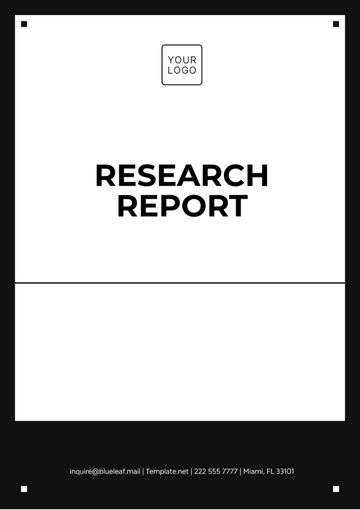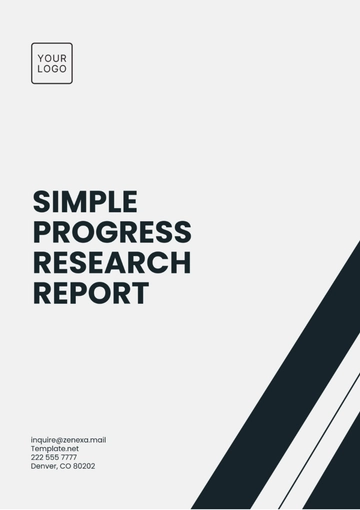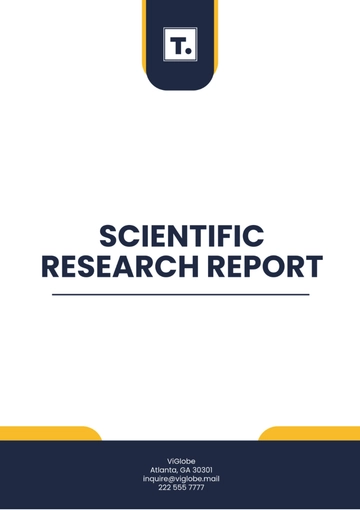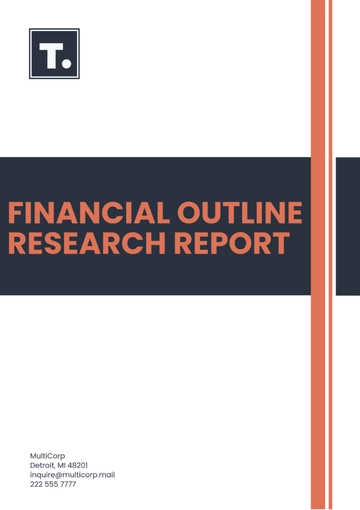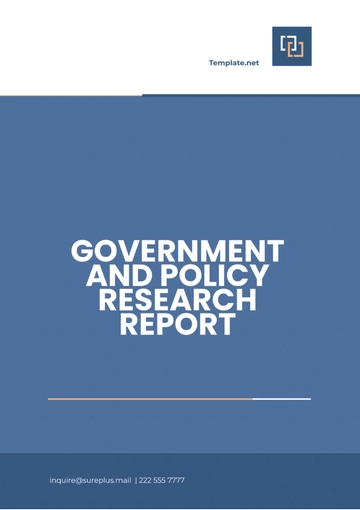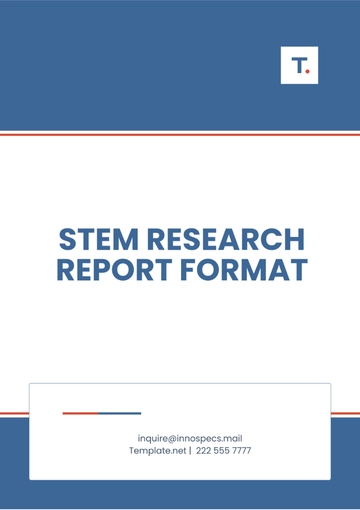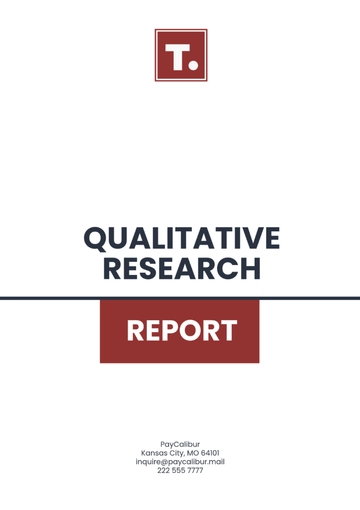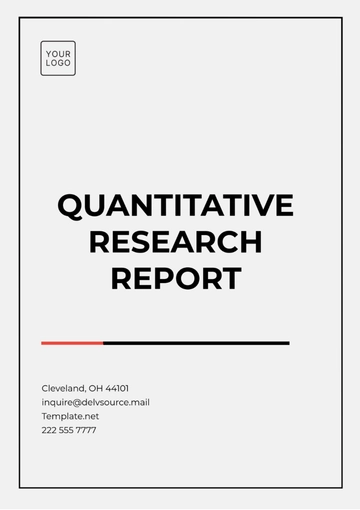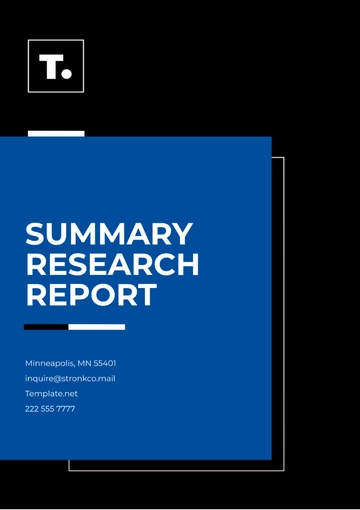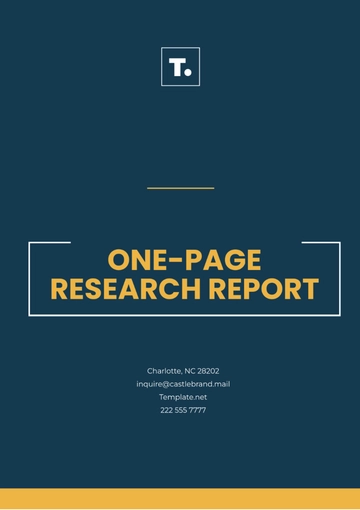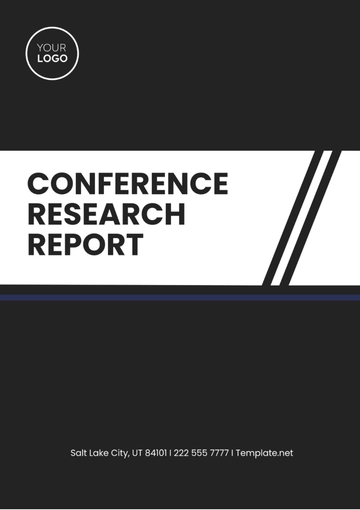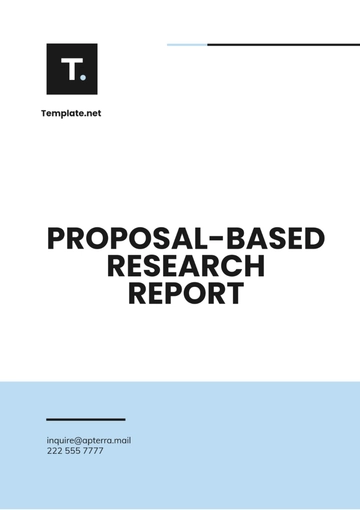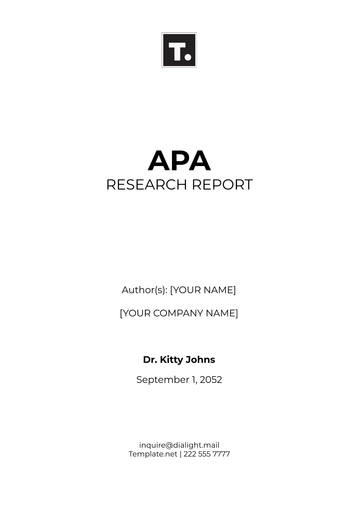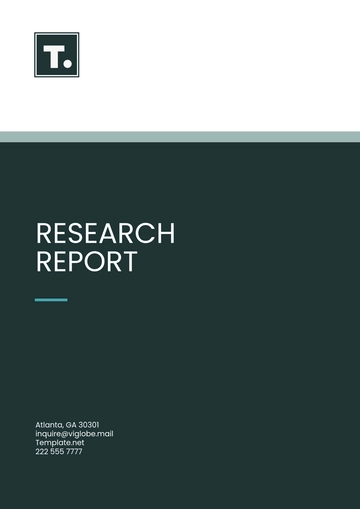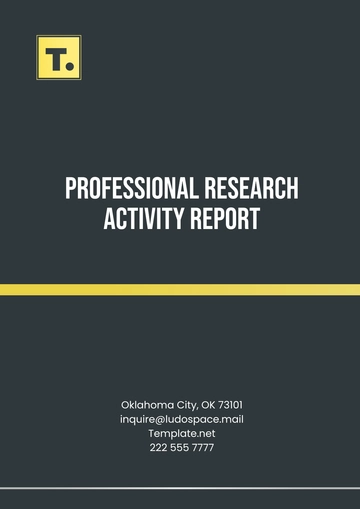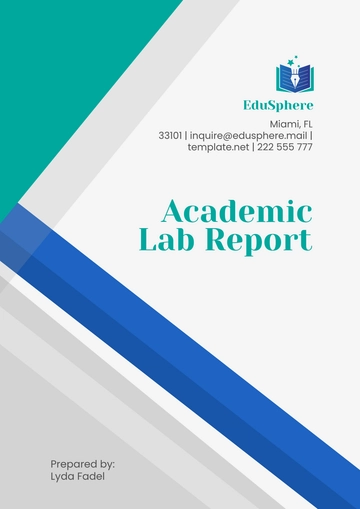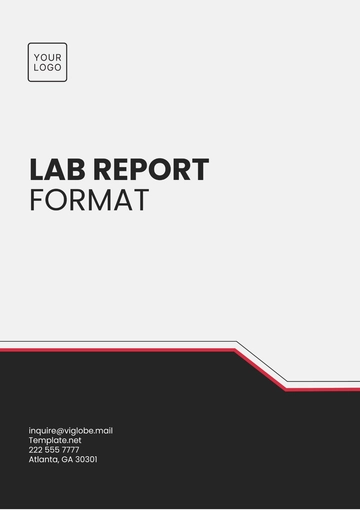Free Chemistry Lab Report
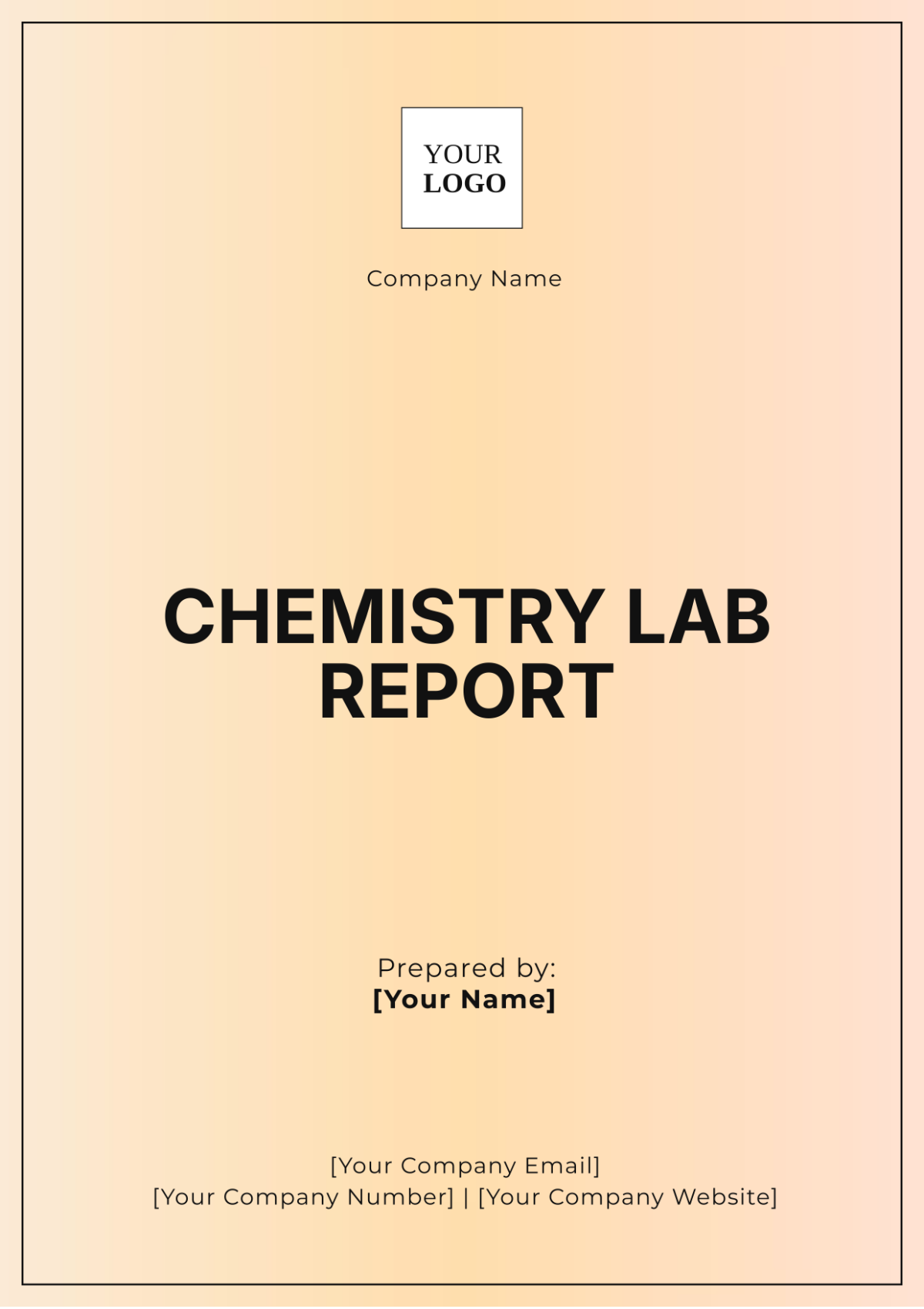
Prepared by: [Your Name]
Date: [Date]
I. Introduction
A. Background
As researchers committed to unraveling the mysteries of chemical reactions, we are captivated by the intricate mechanisms governing molecular transformations. Among these factors, temperature holds a paramount position. The influence of temperature on reaction rates has captivated scientific inquiry for decades, with far-reaching implications across industrial processes and environmental phenomena.
B. Objective
In this experimental endeavor, our goal is to deepen our understanding of the interplay between temperature and the rate of a specific chemical reaction involving hydrochloric acid (HCl) and sodium thiosulfate (Na₂S₂O₃). By systematically manipulating temperature under controlled conditions, we aim to elucidate how changes in thermal energy impact the kinetics of this reaction.
C. Hypothesis
Drawing upon established principles of chemical kinetics, we hypothesize that temperature variations will exert a significant effect on the rate of the reaction under scrutiny. Specifically, we anticipate that as the temperature rises, the kinetic energy of the reacting molecules will increase, resulting in more frequent collisions and, consequently, a heightened reaction rate.
II. Materials and Methods
A. Materials
Our experimental setup encompasses a meticulous selection of materials, each fulfilling a critical role in facilitating our investigation:
Hydrochloric Acid (HCl): The primary substrate in our reaction, meticulously sourced and prepared to ensure consistency and purity.
Sodium Thiosulfate (Na₂S₂O₃): The complementary reactant, carefully chosen to catalyze the desired chemical transformation.
Thermometer: Essential for monitoring and regulating the temperature of our reaction environment.
Beakers: Employed for the containment and blending of reactants, these vessels are indispensable components of our experimental apparatus.
Stirring Rod: Utilized to maintain homogeneity within the reaction mixture, ensuring uniform conditions throughout the experiment.
Stopwatch: A precision timekeeping device utilized for accurate measurement of reaction kinetics.
B. Procedure
Our experimental protocol was executed with meticulous precision, following a step-by-step procedure to ensure reproducibility and reliability of results:
Preparation of Reactant Solution: Equal volumes of hydrochloric acid (HCl) and sodium thiosulfate (Na₂S₂O₃) were meticulously measured and combined in a pristine glass beaker, ensuring thorough mixing.
Temperature Calibration: The temperature of the reaction vessel was precisely controlled and regulated using a calibrated thermometer, with settings adjusted to predetermined values.
Initiation of Reaction: With the reactant solution prepared and the temperature stabilized, the reaction was initiated by introducing a stirring motion to the mixture, thereby promoting molecular collisions.
Measurement of Reaction Time: The onset of the reaction was carefully monitored using a stopwatch, with the elapsed time recorded from the initiation of stirring until the observation of a discernible change in the reaction mixture.
Variation of Temperature: The experiment was repeated across a range of temperatures, systematically altering the thermal environment to elucidate the temperature-dependent kinetics of the reaction.
C. Safety Precautions
Safety remained paramount throughout the experimental process, with rigorous precautions implemented to mitigate potential hazards:
Personal Protective Equipment (PPE): Researchers wore appropriate PPE, including safety goggles and heat-resistant gloves, to minimize the risk of chemical exposure and thermal injury.
Ventilation: Adequate ventilation was ensured within the laboratory environment to dissipate any potentially hazardous fumes or vapors generated during the experiment.
Temperature Regulation: Close attention was paid to precise temperature control, minimizing the risk of thermal runaway or overheating of reaction vessels.
III. Results
Temperature (°C) | Reaction Time (s) |
|---|---|
25 | 120 |
35 | 90 |
45 | 60 |
IV. Discussion
A. Observations
Our observations revealed a compelling trend: as temperature increased, the reaction time exhibited a consistent decrease. This inverse relationship between temperature and reaction time suggests a significant influence of thermal energy on reaction kinetics.
B. Comparison with Hypothesis
The experimental findings closely align with our initial hypothesis, corroborating the anticipated impact of temperature on reaction rate. The observed decrease in reaction time with rising temperature lends support to the notion of heightened molecular activity and collision frequency at elevated temperatures.
C. Factors Influencing Results
While temperature emerged as a primary determinant of reaction kinetics in this study, it is essential to acknowledge the potential influence of other variables, such as reactant concentration and the presence of catalysts. Further exploration of these factors may provide deeper insights into the underlying mechanisms driving the observed trends.
V. Recommendations
A. Further Investigation
To enrich our understanding of the intricate relationship between temperature and reaction kinetics, we advocate for future investigations exploring additional variables. Consideration of factors such as reactant concentration gradients and the utilization of catalytic agents could offer valuable insights into the multifaceted dynamics governing chemical transformations.
B. Safety Improvements
In our pursuit of scientific inquiry, prioritizing the safety and well-being of researchers is paramount. We recommend the implementation of enhanced safety protocols, including the use of fume hoods and regular review of laboratory procedures, to mitigate potential risks associated with experimental procedures.
C. Equipment Calibration
Maintaining the accuracy and reliability of experimental instrumentation is crucial for ensuring the integrity of scientific investigations. We advocate for regular calibration and validation of thermometers and other measuring devices to uphold the precision of temperature control and data acquisition processes.
VI. Conclusion
In conclusion, our investigation into the effects of temperature on reaction rate has yielded valuable insights into the intricate dynamics of chemical kinetics. The observed correlation between temperature and reaction time underscores the pivotal role of thermal energy in modulating reaction rates. Moving forward, continued exploration of these phenomena, coupled with rigorous safety protocols and equipment calibration, will pave the way for further advancements in our understanding of chemical processes.
- 100% Customizable, free editor
- Access 1 Million+ Templates, photo’s & graphics
- Download or share as a template
- Click and replace photos, graphics, text, backgrounds
- Resize, crop, AI write & more
- Access advanced editor
Simplify your scientific writing with the Chemistry Lab Report Template from Template.net. This fully editable and customizable template is designed specifically for chemistry experiments, offering a structured format to present your findings. Easily adapt each section using our Ai Editor Tool, ensuring your lab report meets academic standards and enhances the clarity of your work.
You may also like
- Sales Report
- Daily Report
- Project Report
- Business Report
- Weekly Report
- Incident Report
- Annual Report
- Report Layout
- Report Design
- Progress Report
- Marketing Report
- Company Report
- Monthly Report
- Audit Report
- Status Report
- School Report
- Reports Hr
- Management Report
- Project Status Report
- Handover Report
- Health And Safety Report
- Restaurant Report
- Construction Report
- Research Report
- Evaluation Report
- Investigation Report
- Employee Report
- Advertising Report
- Weekly Status Report
- Project Management Report
- Finance Report
- Service Report
- Technical Report
- Meeting Report
- Quarterly Report
- Inspection Report
- Medical Report
- Test Report
- Summary Report
- Inventory Report
- Valuation Report
- Operations Report
- Payroll Report
- Training Report
- Job Report
- Case Report
- Performance Report
- Board Report
- Internal Audit Report
- Student Report
- Monthly Management Report
- Small Business Report
- Accident Report
- Call Center Report
- Activity Report
- IT and Software Report
- Internship Report
- Visit Report
- Product Report
- Book Report
- Property Report
- Recruitment Report
- University Report
- Event Report
- SEO Report
- Conference Report
- Narrative Report
- Nursing Home Report
- Preschool Report
- Call Report
- Customer Report
- Employee Incident Report
- Accomplishment Report
- Social Media Report
- Work From Home Report
- Security Report
- Damage Report
- Quality Report
- Internal Report
- Nurse Report
- Real Estate Report
- Hotel Report
- Equipment Report
- Credit Report
- Field Report
- Non Profit Report
- Maintenance Report
- News Report
- Survey Report
- Executive Report
- Law Firm Report
- Advertising Agency Report
- Interior Design Report
- Travel Agency Report
- Stock Report
- Salon Report
- Bug Report
- Workplace Report
- Action Report
- Investor Report
- Cleaning Services Report
- Consulting Report
- Freelancer Report
- Site Visit Report
- Trip Report
- Classroom Observation Report
- Vehicle Report
- Final Report
- Software Report
